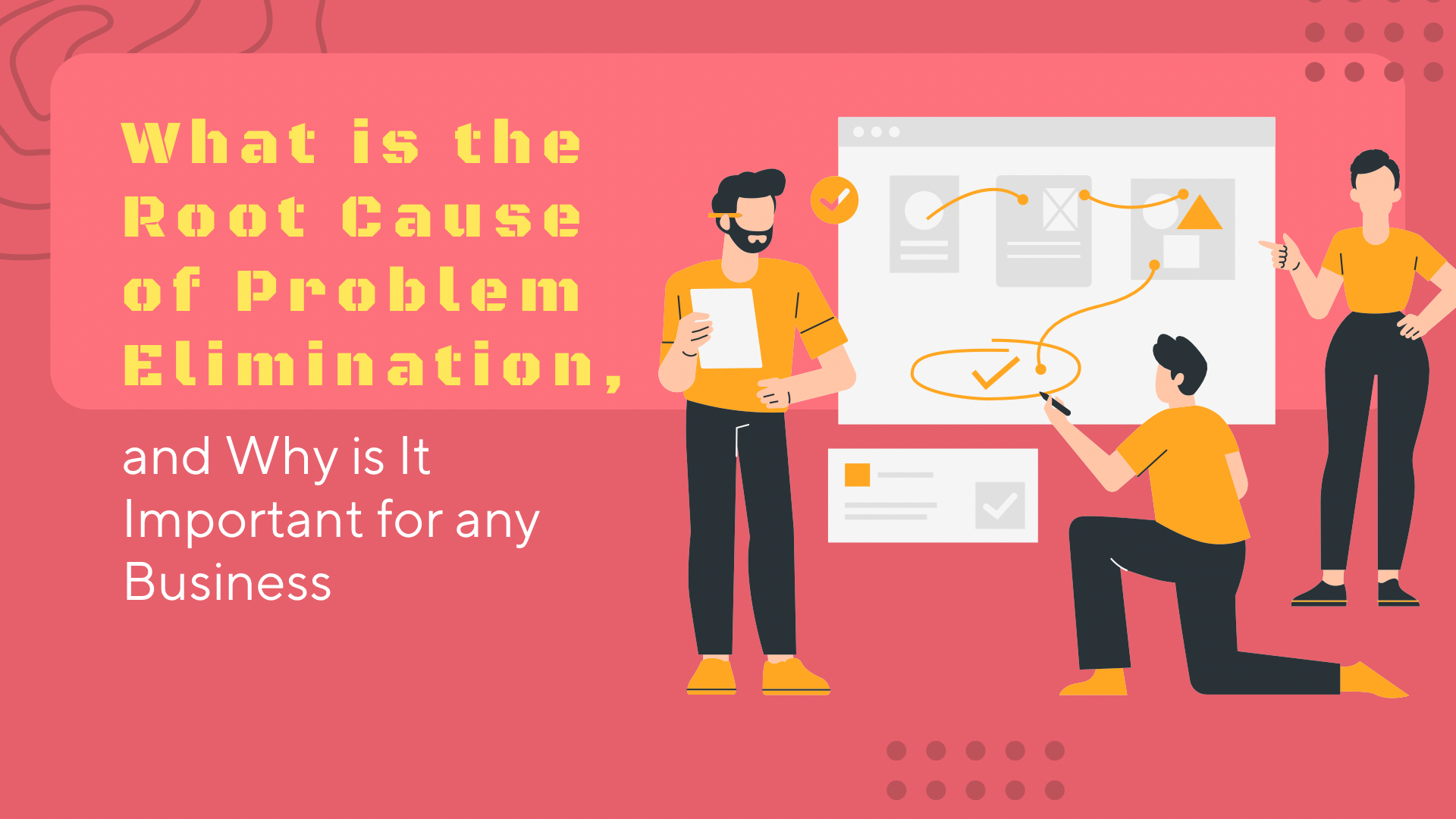What is the Root Cause of Problem Elimination And Why is It Important for any Business?

The core issue — the highest-level problem — is the root cause. It could also be described as anything that causes a cause-and-effect reaction, leading up to a more significant issue.
Ideally, the root-cause factor is permanently eliminated to improve any process. Root-cause analysis (RCA) helps identify problems and provides solutions for eradication. RCA uses various uncovering techniques, tools and approaches to reach issues in-depth.
While some RCA techniques offer root cause identification, others are more geared toward problem-solving.
Anything that mitigates a nonconformance is known as a root cause, and it is essential to eliminate it. If not, you face reoccurring problems. Root-cause cause elimination helps in reducing rework, minimizing accidents, and increasing cost-efficiency.
How to Identify Root-Cause Problems?
The problems you are noticing are often the symptoms of the root cause. Investigating using an RCFA or root cause failure analysis helps you determine the reason behind the failure.
The problem is much more than what a business witnesses. It is about why it has happened.
-
Problems Leading to the Root Cause
Workforce negligence, low productivity, poor plant-floor practices, and lack of following standard procedures can lead to the root cause.
It could also be due to processing or programming. Or reasons such as organizational failure, poor training and improper guidelines could also be the highlighted cause.
-
Addressing the Problems
To access your business’s maturity levels and organizational health, you can ask these questions:
- What is the standard of work that is being followed?
- Is the workforce continuously working towards betterment and improvement?
- What methods are you using to improve and sustain the current processes, and is it helpful?
If the first two questions receive a positive affirmation, you should emphasize the third, as it requires proper methodological implementation. This focuses on the weakness and the effort to improve it.
-
Why a Consultant Must Conduct an RFCA
To work towards problem-solving, everyone in your facility needs to think alike. However, informal RCA meetings do not have the same impact as formal ones.
The workforce may not take accountability or follow up using corrective methods to help eliminate issues. Often, a non-serious meeting would have no documentation. This is why no one has something to look back to or look forward.
On the other hand, when maintenance consultants conduct in-depth RFCA, it is only then that the plant floor and its employees are. The maintenance managers ensure that they convey the root cause to the team, along with evidence of everything. This provides serious dedication toward eliminating problems.
Benefits of Root Cause Analysis
- Helps identify the primary problem and the causes associated with it.
- In-depth inspection of the cause and developing a problem-solving, efficient and systematic approach.
- Finding permanent solutions and building preventive measures to improve organizational practices.
- Implementing mistake-proof solutions.
- Bringing more growth and improvement opportunities for organizations as they face fewer issues, hence increasing production.
Once a root-cause analysis leads to total problem elimination, the business can reduce repetitive tasks, decrease downtime, build competitiveness, avoid injuries and save money.
Root Cause Analysis in Different Industries
Due to its versatility, root-cause analysis applies to various industries. It offers companies support through its problem-solving abilities. Following are some common industries actively using root-cause analysis for industrial improvement.
-
Healthcare
The most crucial aspect of any healthcare system is caring for its patients. In case a patient is harmed or is facing side effects due to prescription drugs, immediate and effective action is needed.
Keeping in mind the patients’ safety, RCA identifies the cause of the undesired issue and develops a corrective plan so that such occurrences are avoided and prevented in the future.
-
IT, Telecommunications and Data Security
In case of severe issues like security breaches, repetitive other problems, and problematic services, root-cause analysis can be highly beneficial. It can also provide a quick security and incident management solution to prevent reoccurring issues.
-
Manufacturing and Industrial Management
In case of equipment failure, RCA can be beneficial to maintenance consultants. When machinery stops working, it can cause severe issues. It could halt the whole production process, leading to downtime.
Downtime eventually leads to an unproductive team and slow manufacturing. It could also make a business lose its money by not being able to reach deadlines or fulfill customer requirements.
However, with RCA, a business can analyze the problem and build a solution. For example, if a piece of equipment requires regular maintenance, it’s better to replace it with a new one. Not only does this save time, but it also boosts production and productivity.
-
Systems Analysis
Thanks to RCA, it is also applicable to the risk management departments of a business if a business requires to identify its goals and develop a successful working model towards them.
With RCA, you can systematically improve by solving underlying issues instead of putting out fires at the last minute.
-
Food & Beverage
Issues such as contamination and foodborne disease are common in the food and beverage industry. In social media, one bad viral review can bring a food business into shambles.
For instance, if customers find a product from a beverage company consistently moldy, the RCA will understand the reason behind it. It may be due to storage issues.
So, the team will build a plan following food safety recalls. Then they can regulate the problem by eliminating it, whether it is a human error or an organizational one.
What Are the Root Cause Analysis Steps?
Following are the primary steps to a root-cause analysis performance, they are:
- Clearly describe the problematic event in a comprehensive and detailed manner.
- Build a predictive timeline to know when the problem will occur.
- Different other additional factors from the root cause.
- Write and visualize the problem using graphics to not only understand the problem yourself but also to explain it to others.
- Identify the top priority root cause and address it to the team.
- Discuss and implement the best solutions to eradicate the said root cause.
Final Words
Every business has its problems and it is essential to identify them. With RCFA, your business can understand the intensity of the pain and work towards preventing it from re-emerging.






